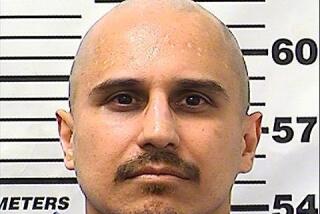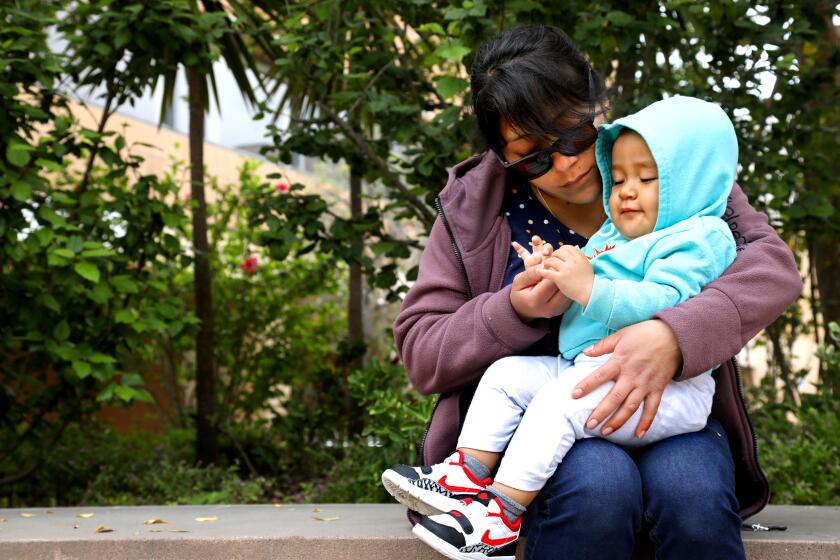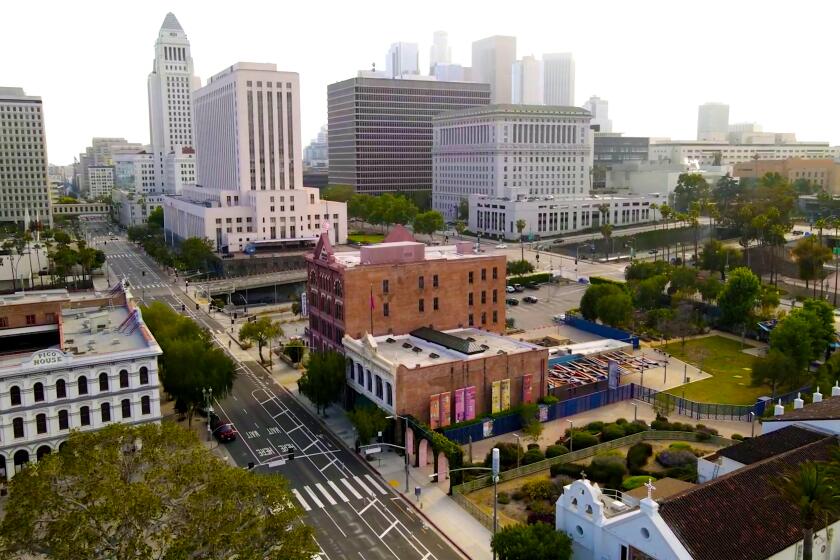Keeping Young Drag Racers on Track
Behind the wheel of a souped-up ’79 jet-black Camaro, California Highway Patrol Officer Chris Kelly revved up the engine as he edged to the starting position on the drag strip.
The “Christmas tree” of staging lights flashed.
Yellow, yellow, yellow, green!
Kelly and a challenger in a blue-and-white ’69 Camaro Z28 in the next lane zoomed down the quarter-mile track at Pomona Raceway.
Kelly lost. But that’s OK.
It’s all part of a program that promotes friendly competition between police and young drivers in efforts to get the dragsters to race on a legal strip instead of on city streets.
“It keeps kids off the street and from racing where it’s dangerous,” said Kelly, an officer from the Santa Ana station who drives the agency’s Camaro in “Beat the Heat” competition at the Street Legal drags at the raceway.
Hundreds of high school-age drivers--and adults of all ages--participate in the Street Legal drags, held one weekend a month from February through November.
Street Legal is conducted by the National Hot Rod Assn. with the support of 15 Southern California law enforcement agencies.
Law enforcement authorities say giving young drivers a safe, controlled and legal place to race helps to curb street racing.
“What we’re doing is getting kids interested in cars as an alternative to gangs, drugs and tagging,” said Placentia Police Officer Eric Hanberg, who builds dragsters to represent his department in “Beat the Heat” races. “The primary goal is to get them off the street.”
The young drivers agree. Dan Miles, 17, of Yorba Linda, who has spent countless hours under the hood to turn a wrecked ’64 Ford Ranchero into a competitive dragster, said the program “keeps the urge to race on the street away.”
“It’s safe here so it makes it more enjoyable because you can’t get into trouble,” Miles said.
The program also encourages fathers to get involved with their children.
“It gives us a common thing,” said Tom Miles, Dan’s father. “He’s learned a lot about cars and what he is capable of doing on his own. Now he gets irritated when I try to help him.”
Hanberg, who over the years built dragsters with his four sons and their friends, now promotes Street Legal in area schools, to other police agencies and out on the street. He hands “get out of jail” cards for free admission to the Street Legal drags to teenagers with cars modified for racing. Usually, racers pay a $10 entry fee and compete for trophies.
In September, Hanberg and other program supporters will visit high school auto shop students in Orange County schools to introduce them to Street Legal, show them how to build their own dragsters inexpensively using junk parts and warn about the dangers of street racing.
Drag racing, Hanberg said, is “challenging and something anybody can do with any kind of car.”
Hanberg and half a dozen other drag race enthusiasts have built cars for the program, including the CHP’s Camaro. They all chip in money to buy parts and pay for ongoing expenses.
A 1984 black-and-white Camaro was also built to race in competitions. Drag racer John Beck, 43, of Orange, who built the engine, drives the car for Placentia police.
Over the past two years, the program has grown dramatically, with more than 1,000 participants turning out each weekend, said Bernie Partridge, director of Street Legal for the hot rod association.
“To really attack the street racing problem, you have to give them a place to race,” Partridge said.
The program was started in 1994, he said, at the request of police and city officials of La Verne, which had a street-racing problem. Pomona Fairplex donates the drag strip for the program.
More to Read
Start your day right
Sign up for Essential California for news, features and recommendations from the L.A. Times and beyond in your inbox six days a week.
You may occasionally receive promotional content from the Los Angeles Times.






